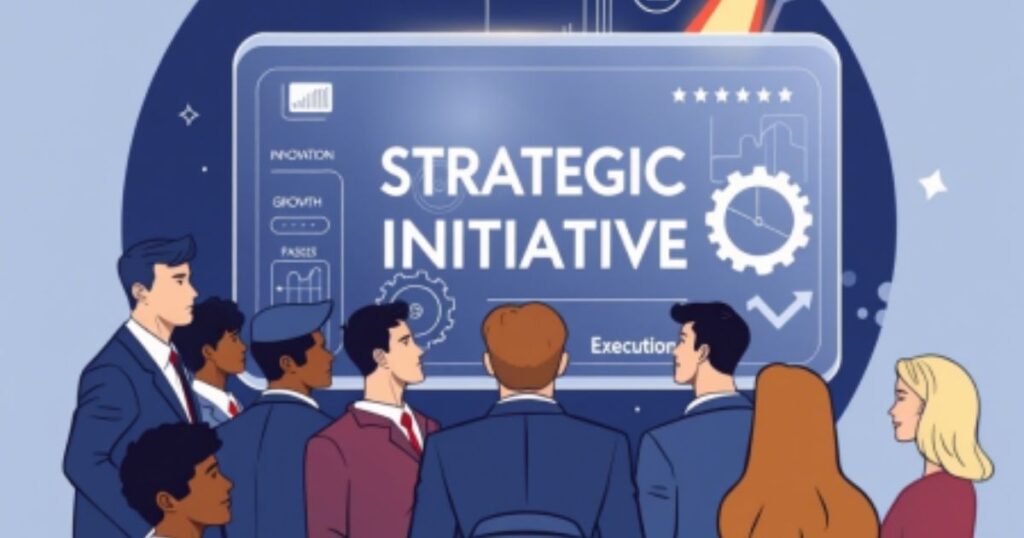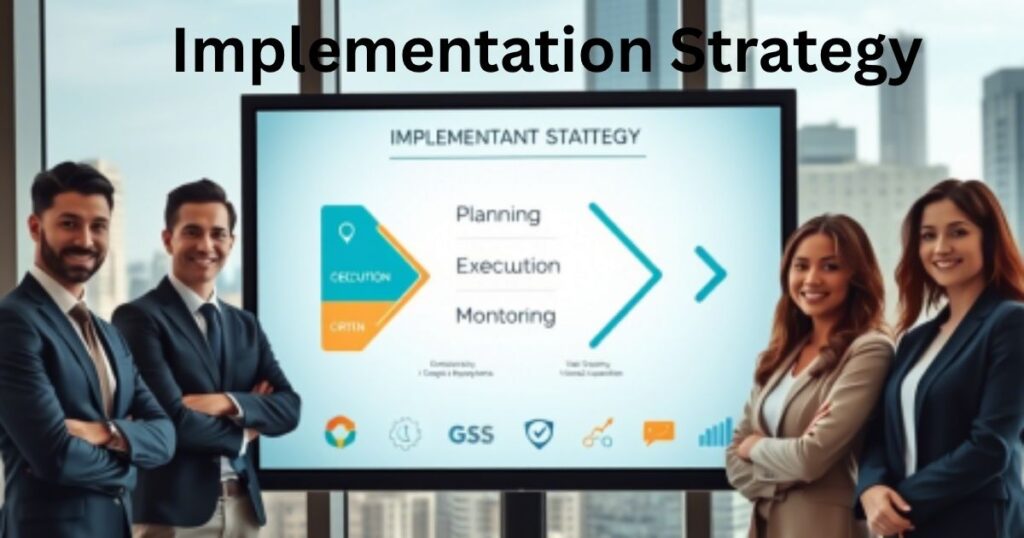Creating an action plan is one of the best ways to stay focused and get things done efficiently. Whether you’re working on a personal goal or a team project, having a clear action plan helps you organize your tasks, set deadlines, and track progress easily. Sometimes, using the same words over and over can feel repetitive. That’s why people often look for an action plan synonym or another word for action plan to keep their writing fresh and engaging.
You might also hear it called another word for plan of action, synonym for action plan, or even another word for implementation plan. These terms all mean the same thing,they give you a clear way to break big goals into smaller steps. In this post, you’ll learn different ways to say action plans, all in easy words you can understand and use in everyday life. Let’s get started and make your planning even better.
Main Points
When you write “action plan,” it might feel ordinary or overused. Using different words like Strategic Initiative or Tactical Roadmap can make your ideas clearer and more powerful. These choices show the right mindset and match your goal, whether you’re working on a small task or a big project.
By choosing the best phrase,whether it’s a Performance Plan or Step-by-Step Guide,you make it easier for your audience to see what you mean. Your words help people understand your direction. Think of this article like a toolbox filled with useful, easy-to-use synonyms that make your message sharper and stronger.
- Know your goal – Always start by knowing what you want to achieve.
- Make a clear plan – Write down simple steps to reach your goal.
- Use small tasks – Break big jobs into small, easy tasks.
- Set a timeline – Decide when each task should be done.
- Choose the right people – Give tasks to the best person for each job.
- Track your progress – Check often to see how things are going.
- Fix problems fast – If something goes wrong, change the plan quickly.
- Keep it simple – Don’t make things too hard or confusing.
- Stay focused – Don’t let distractions slow you down.
- Celebrate success – Be proud when your work is done well.
Strategic Initiative

A Strategic Initiative shows everyone that your project has goals tied to your company’s vision. You work collaboratively and structured to follow a roadmap with milestones and keep tracking each step. Your team and the organization unite around a clear objective, and they plan for the future. Using this phrase signals you set targets, start implementation, and monitor progress so you can make adjustments as needed,all done efficiently.
When you call something a Strategic Initiative, you hint at big, long-term work. You focus on the execution, not just the idea. It’s more than just a plan,it’s a promise that you will reach your goal with purpose. It feels strong and inspirational.
Tactical Roadmap
A Tactical Roadmap helps break down how a project will move forward with clear steps over time. You work with your colleagues, share the timeline, and keep track in a concise, even slightly informal, way. This kind of plan gives a clear direction and method for getting things done. You don’t just hope it works,you use a tracker and set every next action, so the whole team sees the goal and the path to it.
Using a Tactical Roadmap is practical. It helps everyone know what will come next. You stay focused. You track every step. This syncs your work and communication so your plan succeeds.
Operational Blueprint
An Operational Blueprint maps out your workflow, your framework, and the roles that support your company’s operations. Improve productivity and make processes systematic. You share responsibilities, aim for best results, and allow flexibility so you can improve along the way. Provide a strong guide for adaptation, defining roles, and implementing changes that boost performance.
This is perfect when your team needs a clear way forward. It sets a strong foundation to handle daily tasks without confusion. With an Operational Blueprint, your organization runs more smoothly and scales better.
Read this Also: 20 Synonyms for “Game Changer”
Project Design
Thinking about Project Design means you care about the structure before you begin. Gather resources, decide on timelines, and pick methodologies. And set a foundation for execution that leads to success. You think in detail and stay strategic, so your team can stay focused on delivering results.
Calling it Project Design shows you value preparation. The execution of your plan relies on that strong groundwork. A detailed, thoughtful approach helps your team know what’s next and how to finish strong.
Implementation Strategy

An Implementation Strategy gets your tasks done by organizing management, timeline, metrics, and resources. Focus on optimization and allocation so effort doesn’t go to waste. Measure outcomes and boost productivity. You set measurable goals that fuel advancement, use tracking and monitoring, and keep objectives in sight.
When you pick an Implementation Strategy, you say you will turn an idea into reality. You guide the team through each step and make sure they know how to measure success. You keep your strategy clear and your progress solid.
Find more words!
Sometimes you need more variety. Tools like online thesauruses or writing assistants help. Use them to explore words like Performance Roadmap or Achievement Plan. Choosing the right phrase shows your audience you’re serious and professional. For example, a teacher writing a lesson plan might use Task Schedule, while a manager tracking team performance might prefer Performance Plan.
Knowing more words helps you speak clearly and fit the tone. You show your reader you understand your audience and know how to connect. Your writing becomes powerful and engaging.
Task Schedule
A Task Schedule helps teams know what to do and when. Note your project, set your agenda, list tasks, and prepare your work with clear deadlines. You stay organized, goal-focused, and ready to make adjustments as needed. You use tracking and monitoring to keep everything clear and productive, keeping your focus sharp.
Using a Task Schedule makes teamwork smoother. You set expectations, assign dates, and everyone knows what comes next. It brings clarity to your daily work.
Performance Plan
With a Performance Plan, you set goals, monitor objectives, and gather feedback from your team or employees. Use measurable indicators, often SMART goals, to see if things improve. You drive communication, strengthen accountability, and build a clear path forward. Your support development by watching metrics, meeting expectations, and helping your team grow.
This phrase is clear and goal-focused. People know you care about real results and fair evaluation.
Execution Outline
An Execution Outline shows the path just before starting. You break tasks into steps, match them with responsibilities, pick the right strategy, and set milestones. This plan gives guidance and keeps your workflow structured. You track execution, keep everything clear, and move through phases with confidence.
This term helps everyone see what comes next. You manage steps well and make sure nothing gets forgotten.
Roadmap for Success
A Roadmap for Success sounds inspiring. You set big goals, lay out tasks, and track progress. You keep your workflow smooth by prioritizing, optimizing, and guiding your team toward clear milestones. This journey shows how your plan leads to real, measurable wins.
Choosing a Roadmap for Success adds energy. It reminds people why they work hard and what they’re building together.
Initiative Blueprint

An Initiative Blueprint is similar to a Strategic Initiative, but more detailed. You write out steps, assign responsibilities, and organize resources. A framework for planning, making execution more efficient. You structure the whole project and offer a clear guide for every part of your plan.
This phrase shows you care about both the big vision and the small steps. It blends strategy with action.
Action Strategy
When you use Action Strategy, your focus is on actions, responsibilities, and a clear timeline. Who does what, and when? Your team knows objectives and stays in sync. You drive coordination and help your project meet its goals with monitoring and tracking so everyone stays aligned.
This phrase makes your plan feel active. It shows people they are part of something real.
Task Roadmap
A Task Roadmap brings together strategy and assignments. You list tasks, define steps, and set objectives. You track progress, deal with obstacles, and improve coordination. Everyone sees the plan and works together toward the goal.
This phrase gives clarity and keeps your team on the same page.
Achievement Plan
An Achievement Plan is built around your goals and the progress you want to make. You use measurable steps, adjust as you go, and stay accountable. SMART goals help you review results, check milestones, and stay motivated.
This phrase feels personal and hopeful. It shows you’re moving toward something meaningful.
Performance Roadmap

A Performance Roadmap gives a long view of growth. You set milestones, watch indicators, and direct your organization toward better productivity. You make decisions based on real data and keep things running smoothly.
This phrase shows you aim to do better over time. It’s not just about now,it’s about tomorrow too.
Step-by-Step Guide
Finally, a Step-by-Step Guide is straightforward and easy to follow. You lay out tasks and milestones in plain steps. You provide templates, share best practices, and streamline workflow. This is ideal when people need a clear route to reach objectives. You simplify the plan so anyone can follow along and feel confident.
A Step-by-Step Guide works for tutorials, learning, or even onboarding. It breaks down complexity into simple, actionable steps to success that feels reachable.
Sure! Here are 5 new and original headings that are not repeated from your previous list. Each one comes with two easy, human-style paragraphs using simple English and short sentences. All entities are bolded for clarity.
Clear Work Plan
A Clear Work Plan helps you know what to do. It shows every task in simple steps. You can see who is doing what. It keeps the whole team on the same page. You won’t feel lost or confused.
This plan helps you finish on time. You follow a set order. If anything changes, you can make quick fixes. A clear plan makes everything feel less stressful. It’s like a map for your work.
Simple Goal Path
A Simple Goal Path shows you how to reach your goal. You know where to start and how to get there. Each step is small and easy to follow. This helps you stay focused.
When you use a path like this, you move forward faster. You can check your progress each day. It keeps you moving without getting off track. You feel proud each time you finish a step.
Daily Task Flow
A Daily Task Flow helps plan your day. You know what to do each hour. It keeps your schedule clean and simple. No guessing or last-minute stress.
When your day is set, you save time. Don’t miss small things. You get more done. You also feel more calm and in control. A good task flow makes the whole day better.
Smart Work Route
A Smart Work Route is a smart way to get things done. You pick the best path for your job. It saves time and avoids problems. Don’t waste energy.
Think before you start. You plan each move. Use your time and resources well. It’s all about working smarter, not harder. With a smart route, you finish faster and better.
Clear Steps Map
A Clear Steps Map helps you break work into small pieces. You can see every step clearly. It’s easier to begin when you know what’s coming.
You don’t feel stuck. The map gives you a guide. You follow one step at a time. It feels good to see how far you’ve gone. You move forward with confidence.
FAQ’s
What is a synonym for action plan?
An Action Plan can also be called a tactical roadmap, strategic initiative, or step-by-step guide to reach a goal or task.
What is the synonym word for action?
A synonym for action can be task, move, step, or effort, depending on how you’re using it in your Action Plan.
What is the meaning of an action plan in simple words?
An Action Plan is a list of steps that show what to do, who does it, and when it’s done to reach a goal.
What is a synonym for putting a plan into action?
Putting a plan into action can also be called execution, implementation, or starting your Action Plan to get things done.
How do you word an action plan?
Write your Action Plan with clear steps, task names, deadlines, and who is in charge of each task from start to finish.
Conclusion
In the end, having an Action Plan helps you stay clear and focused. It shows what needs to be done, step by step. No matter what your goal is, a good Action Plan makes things easier. You always know who is doing what and when. This saves time and avoids confusion.If you’re looking for an action plan synonym, you can use another word for action plan like implementation plan or plan of action.
Some also say strategy, roadmap, or project guide. These are all synonyms for action plans. They all mean the same simple thing,steps to finish a task or goal. No matter what you call it, an Action Plan is key to success. So whether you say another word for implementation plan or another word for plan of action, just remember,it’s all about getting things done the right way.

Gramcoachpro is your go-to platform for mastering grammar, writing, and communication skills. If you’re a student, teacher, or content creator, we provide easy-to-understand tips, examples, and tools to improve your language — fast and effectively. Our mission is to make better writing simple and accessible for everyone.

